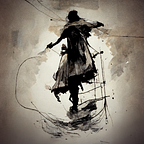It was a strange land when in 1891 thirty-eight year old Fausto Zonaro traveled together with his lover to Istanbul. The capitol city of an empire which in those years controlled lands from the Mediterranean shores of North Africa to the Gulf of Aden, abutted Persia, and continued on sustained by victorious armies through the centuries into European lands between the Adriatic and Black Seas since the fall of Constantinople in 1453 A.D.
As the city stood between Europe and Asia — numbering among its inhabitants Turks and Greeks, Armenians and Kurds, Arabs and Italians — like Zonaro himself. It also stood between times, and this was perhaps most noticeable in the stark contrast between the flowing robes and turbans of the east mixing with the western clothes of the neighboring Austro-Hungarian empire with its capitol, Vienna — the modernization of Turkey begun in earnest with the Tanzimat decrees of 1839 would not many years later culminate in the rise of Mustafa Kemal Atäturk, but not before the horror of the first world war caused a crisis of faith in Muslim as well as Christian civilization. Zonaro shows us in his famous work The 10th of Muharram how strong the faith of this imperial people was, as a Shia procession — headed by an imam inspiring the devoted with scripture and echoed presumably by the women in the foreground — flagellates with scimitars in remembrance of the bloodletting at the battle of Karbala in 680 A.D.
In these works that feature a city that weighs so heavily on the fabric of space and time, is it possible that we see what motivates a former Mayor of Istanbul? In light of recent history from the failed 2016 coup, the 2018 alteration of the Hagia Sophia into a Mosque, and the resurgence of the Nagorno-Karabakh conflict in late September 2020, clearly the old fault lines remain - will they continue to be put to new uses?
